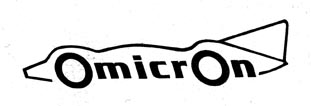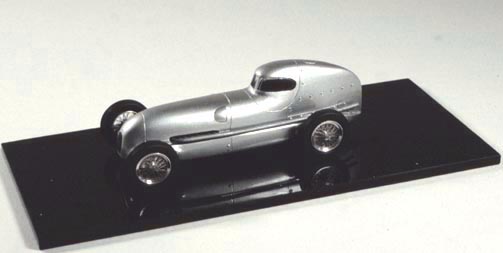The Mercedes W25 Rekordwagen and "Rennlimousine"
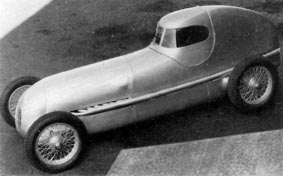
Mercedes W25 Rennlimousine 1934,
before the Gyon (Györ*) attempts
(photo from "The Mighty Mercedes")

The open W25 rekordwagen (photo Daimler-Benz Archiv)
In 1934 the german cars, soon to be known as the "Silver Arrows", broke into the GP scene they would then dominate till WW2.
Almost as soon as the new cars were ready Auto Union quickly realized that Grand Prix cars could be effectively used for breaking land speed records (Germany only held a handful of small displacement class records at the time), thus contributing to the image of power Germany was building up and imposing to the world. As early as march Hans Stuck had grabbed three medium distance records using a mostly standard Typ A GP car.
Daimler-Benz could not sit and watch the rivals get all the press exposure and the glory, and anyway the government was pushing competition between the two companies to guarantee better results, so they quickly set to turn out something of their own to do the job.
Like Auto Union, they took their very successful W25 GP car and equipped it with the latest version of their supercharged eight-cylinder, M25B, that was still under development for the 1935 GP season. The displacement was 3.992 cc and the power output, using the special W.W. fuel, was 430 HP (other sources say 398 HP).
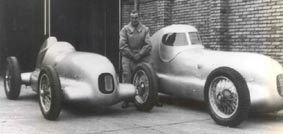
Ernst Henne with the two cars ready for the Gyon (Györ*) attempts
(photo Daimler-Benz Archiv)
At the suggestion of team driver Ernst Henne (of BMW motorcyle fame), two cars were readied to attack short distance records in the International class C (3 to 5 litres). The first was basically a GP car with aerodynamic refinements: a smaller front air intake, a louvreless hood and a taller deflecting scuttle design instead of the usual aero windshield. The second car was really a first in that it had a closed cockpit, which quickly earned it the nickname of "Rennlimousine" (race sedan). It shared the other aerodynamic refinements of the open car, but had a grille protecting the front air intake, which is not seen on the open car. Neither car had front brakes, while disk covers on the rear wheels are seen in some photos on the open car, but not on the Rennlimousine. Apparently neither car had the three pointed star on the nose.
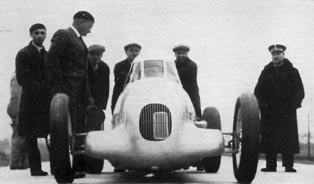
The Rennlimousine on the starting line at Gyon (Györ*)
(photo from "Phaenomen Geschwindigkeit")
In late October both cars were brought to a stretch of concrete straight road by Gyon (german spelling for the village of Györ - see note below*), not far from Budapest in Hungary. Just a week earlier Auto Union had harvested a few more standing start class and world records at the Avus. Henne first ran the open car, which almost immediately broke the supercharger. The closed car had serious aerodynamic problems: the roof tended to lift open and the car handled terribly. A solution was obviously found, since on 28 October, driving this car, Mercedes ace Rudolf Caracciola easily took the Class C records for the flying kilo and mile, at 197.35 and 196.78 mph respectively (317,600 and 316,678 km/h). What did the car look like during the actual record attempts is still a bit of a mistery. Most contemporary and later reports, based on the official Mercedes-Benz press releases, state that a better way to keep the roof in place was found and the car ran with the roof in place, as it appears in all the published photos, while in Chris Nixon's book Henne says that the roof was taken off altogether for the record runs. Recollections at a long distance of time are of course to be taken with some caution, not to forget that Henne was originally the designated driver and might have been quite unhappy when Caracciola took all the credit and glory (Henne left the team at the end of the year): nevertheless, there are photos in the MB archives that show the car running without the roof, so it could well be true that the record was taken in that configuration. More archive work will be necessary to find a definitive answer to the question. Certainly, the aerodynamic efficiency of the car without the roof looks very doubtful to say the least and one wonders why, at that point, they should not have used the sister open cockpit car for the record, which was certainly much better balanced and aerodynamically efficient...

The open W25 on the starting line at Gyon (Györ*) (photo Daimler-Benz Archiv)
In fact, on 30 October the open car was ready again for Caracciola to set a new Class C record on the standing start mile, at 117.23 mph (188,656 km/h) (Henne's memoirs again disagree as he states the car was again the "Rennlimousine" minus the roof while every other source states it was the sister car). This was also a World Record and it nicely spiced the success for the Mercedes team as it was taken away from Auto Union. An attempt to the standing start kilo on 3 November produced 98.03 mph (157,756 km/h), which some sources list as another class record, but was actually below Auto Union's existing figure.
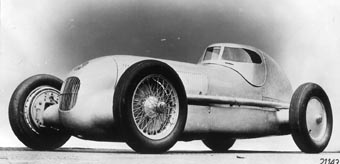
Ready for the Avus, with lower roof, louvered bonnet and the star on the nose
(photo Daimler-Benz Archiv)
The "Rennlimo" reappeared at the Avus in late november for more tests and record attempts. It had been modified in several details. The roof had been lowered, the flush hood had been replaced by a standard one with all its louvres, front brakes were back in place and wheel disks were tested all round, although apparently only the ones at the back were in place during the later successful attempt. Earlier attempts to short distance records on 1 December failed due to tyre problems; attempts for the hour record also failed twice, the first time due to oil leaking, the second again for a tyre failure. But on 10 December success at last came and Caracciola set a new record for the 5 kilos, standing start, at a speed of 193.86 mph (311,985 km/h).
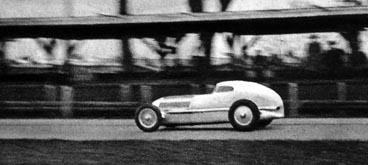
At the Avus in December 1934
(photo from "Sapere")
More tests were carried out during the following days, mostly engine tests in preparation for the 1935 GP season. The "Rennlimousine" was actually entered at least once in a race, again at the Avus, where it was driven by Hans Geier, while no more records came from this, the first true Mercedes Benz record car.
But the Auto Union vs Mercedes battle had just started...
*(NOTE: when the record attempts took place, apparently the german spelling "Gyon" was still current: it was used not only in all contemporary reports, but also in the official record cartificates. As a PR representative of Mercedes in Hungary recently pointed out to me, the current correct spelling in the hungarian language is "Györ").
All the records set by the Mercedes W25 record cars
"AIACR" (later FIA) International records for Category A Group I, in the Class indicated.
All records set by Rudolf Caracciola, driving car indicated (*= see text for details)


